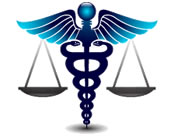

Medical Malpractice Connections

-
Surgical Negligence
- Adrenalectomy (Removal of Adrenal Gland)
- Adjustable Gastric Banding
- Appendectomy (removal of the appendix)
- Cholecystectomy (removal of gallbladder)
- Colectomy (colon resection)
- Common bile duct exploration
- Diagnostic Laparoscopy
- Enterectomy (small bowel resection)
- Enterolysis (removal of scar tissue in the abdomen)
- Esophagectomy (removal of esophagus)
- Fundoplication (surgery for heart burn)
- Gastrectomy (removal of the stomach)
- Gastric bypass
- Gastric Sleeve
- Hepatectomy (resection of portion of the liver)
- Hernia repair
- Hiatal Hernia Repair
- Pancreatectomy (removal of portion of the pancreas)
Cholecystectomy (removal of the gallbladder)
The condition
The gallbladder is located beneath the right side of the liver. It is a pear-shaped sac that stores bile made by the liver. Upon ingestion of a meal, bile empties from the gallbladder into the small intestines to aide in digestion of fatty food. If the gallbladder is removed, bile is released from the liver directly into the intestines.
Symptoms:
Gallstones are the most common cause of symptoms associated with gallbladder disease. Concentrated bile forms sludge and sedimentation leading to gallstone formation. The passageway (duct) from the gallbladder to the intestines may become blocked by this debris. Blockage may produce the following symptoms:
- Nausea after fatty meal ingestion
- Right upper quadrant abdominal pain
- Vomiting
- Fevers and chills
- Indigestion
- Jaundice
Diagnosis
Abdominal ultrasound is the preferred test for evaluating patients believed to have gallbladder problems. This test identifies the gallstones, duct blockage, duct dilatation, and gallbladder wall inflammation.
Surgery
Laparoscopic gallbladder removal rather than open removal is generally the treatment of choice for treating gallbladder disease. Laparoscopic removal involves four quarter-inch incisions through which a camera and instruments are placed. Open gallbladder removal requires a 5-10 inch incision. Both techniques require general anesthesia. However, patients may be discharged the day of surgery with the laparoscopic approach compared to a hospital stay of 3-7 days with the open technique.
Risks
Cholecystectomy (removal of gallbladder) carries the potential of complications whether performed open or minimally invasive. The primary risks of cholecystectomy are:
- Gallbladder perforation with stone spillage
- Bleeding
- Intra-abdominal infection
- Bile leak (biloma)
- Retained common bile duct stone
- Common bile duct/hepatic duct injury
- Bowel perforation
Medical negligence
The above mentioned risks and complications are known to happen with cholecystectomy (removal of the gallbladder) and such complications do not necessarily constitute deviation from the medical standard of care. The following examples however may be considered as medical negligence.
Common bile duct injury. The true incidence of common bile duct injury in the general community is difficult to know; large meta-analyses of published retrospective data place this incidence at less than 0.5%. In a recent survey 90% of the doctors surveyed stated that common bile duct injury by itself does not constitute deviation from the standard of care; 80% however agreed that in the absence of inflammation or anatomic variance such injury may be considered negligence.
Different types of injuries on the bile ducts during cholecystectomy have been described: transection, excision, laceration, clip impingement, and burn (by electrocautery).
Studies on bile duct injuries that resulted in litigation have shown that the main reasons for lawsuits are:
- Delayed diagnosis and treatment
- Complications as a result of delayed diagnosis
- Misinterpretation of radiologic images
- Delayed referral to specialized center for reconstruction/correction
Perforation of the bowel. Unrecognized intestinal perforation (during laparoscopic cholecystectomy-removal of gallbladder) most commonly occurs secondary to laparoscopic port (trocar) placement and less commonly with duodenal injuries. This complication has a high morbidity risk if it is not recognized within the first 2-3 days after surgery.
| Top of page |
| Home | Medical Malpractice Attorneys | Medical Experts | Medical Negligence | Services | Statue of Limitations | About Us | Contact Us |